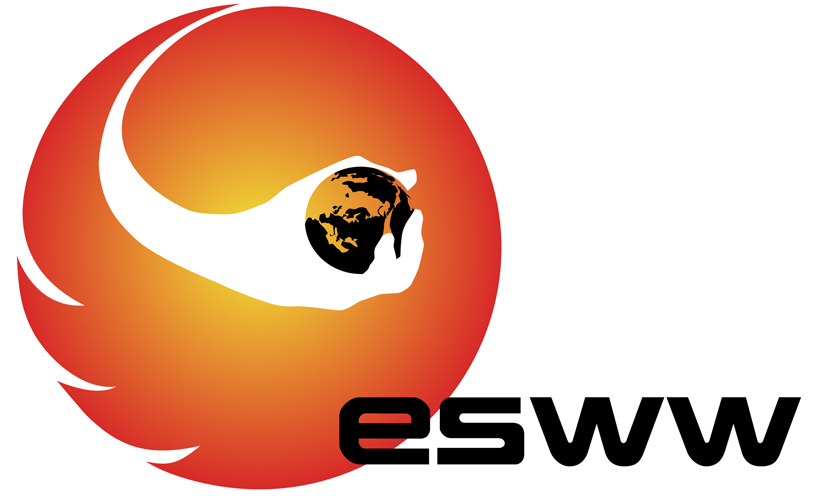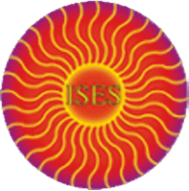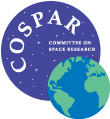
16-20 November, 2009 - Brugge, Belgium
Space Weather Fair
We are at the second edition of the space weather fair. The fair offers the opportunity to end users, industry and service providers, scientists to interact in an informal working environment.
Especially end users and companies can express what lies in their field of interest.
Space Weather Service providers are invited to participate as a stand holder, showing e.g. hands-on tools, data storage facilities, space weather modeling, space weather applications.
Stand Holders
| Spherical EUV and Plasma Sensor The versatile and real low-cost instrument SEPS enables measurements of the ionising spectral solar EUV irradiance as well as of plasma parameters such as electron and ion densities, electron energies and temperatures as well as ion composition in the terrestrial ionosphere. It can be operated in MEO orbits, in the interplanetary medium and in the planetary ionospheres as well. The sensor with a spherical outer diameter of 8 cm and a mass of < 300 g does not require any solar pointing control because the effective area is of the same size from various directions. In addition, it is a device with extremely stable calibration paramters over very long periods. Depending on the distance from the spacecraft, charging of satellites can be determined, too. G. Schmidtke, W. Konz, R. Brunner -- Fraunhofer-Institut für Physikalische Messtechnik IPM |
|
PROBA2: launch of ESA's first space weather mission PROBA2 is an ESA micro satellite with two space weather monitoring instruments onboard: SWAP & LYRA. SWAP is designed to image the solar corona and monitor the occurrence of all events and features that are relevant for space weather. This includes coronal holes, active regions, flares, prominences and coronal mass ejections. LYRA is a radiometer that will monitor the solar irradiance at high temporal resolution in 4 passbands that are carefully selected for their relevance in space weather, Earth aeronomy and solar physics. The PROBA2 science center, hosted at the SIDC - Royal Observatory of Belgium, will process and distribute the SWAP and LYRA data products. An open data policy has been adopted. At the time of this writing, PROBA2 is at the Russian launch site "Plesetsk Cosmodrome" where it is being mounted on the Eurockot launcher. Launch is foreseen for November 2, just two weeks before the ESWW6 conference. PROBA2 is as a unique European asset and building block in the upcoming SSA program. D. Berghmans -- ROB/SIDC |
| Space Weather Prediction in Belgium What's the weather in space today and tomorrow? How high is the probability for solar flares to happen, how is the solar wind behaving, can we expect a geomagnetic storm? Is the radio communication disturbed? The weather in one glimpse: an easy, comprehensible and usable display. The SIDC forecast-team -- ROB/SIDC |
SEPEM: Solar Energetic Particle Environment Modelling Welcome to the pre-release of the ESA Solar Energetic Particle Environment Modelling (SEPEM) application server. The SEPEM project is working towards creating new solar energetic particle environment engineering models and tools to address current and future needs. These will be made available via an online server giving the user flexibility in their use of these tools and models and analysis approach. Participants interested in trying out the SEPEM server for themselves, are invited to attend our "SEPEM master class" at the ESWW6 fair where hands-on SEPEM exercises will be given in order to introduce interested users to the server prior to the full release in 2010. D. Heynderickx -- DH Consultancy / N. Crosby -- BIRA-IASB / A. Glover -- ESA |
| Rhea: solutions for the space industry Rhea is an independent Space Engineering Consulting and Software company that offers knowledge-based services and innovative solutions to the space industry. Rhea has supported over 37 space missions in the last 15 years, including comet chasers, planetary and Moon missions, deep space astronomy experiments to understand the fundamental laws of physics, climate monitoring, meteorology, navigation and communications. The group's technical knowledge base, together with the practical experience of its engineers gained through the most demanding projects, ensure that Rhea can provide on demand the highest level of expertise required by our customers, such as ESA, Eumetsat, EADS Astrium, Thales Alenia Space and others. Rhea provides engineering solutions in spacecraft Assembly Integration and Test (AIT), spacecraft and payload operations, ground segment definition, on board software development, system engineering, mission analysis and radiation analysis. In the area of space weather and environment Rhea's competencies are in the following areas:
G. Lawrence, S. Alexandrova -- Rhea |
NMDB: Neutron Monitor Database The worldwide network of standardized neutron monitors is, after 50 years, still the state-of-the-art instrumentation to measure variations of the primary cosmic rays in the energy range 500 MeV-60 GeV. These measurements are a necessary complement to space based cosmic ray measurements. Unlike data from satellite experiments, neutron monitor data is often only available from the individual station?s web site, in varying formats, and not in real-time. To overcome this deficit, the European Commission is supporting the Real-time database for high-resolution Neutron Monitor Measurements (NMDB, www.nmdb.eu) as an e-Infrastructures project in the Seventh Framework Programme in the Capacities section. It will for the first time allow use of real-time cosmic ray measurements for space weather applications such as solar cosmic ray event alert and dosimetry calculations. Besides creating a database and developing applications that use this data, a part of the project is dedicated to create a public outreach and training web site to inform about cosmic rays and possible effects on humans, technological systems, and the environment. C. Steigies --Christian-Albrechts-Universitaet Kiel / K-L Klein, N. Fuller -- Observatoire de Paris and the NMDB team |
| SPENVIS and ESWeP M. Kruglanski -- BIRA-IASB |
Practical Information
The fair takes place on Wednesday Nov 18, 16:30-18:30.
If you want to have a stand, please contact Petra Vanlommel.
 |
 |
 |
 |
 |
 |
 |